Treasure Necklace-Edit-Added 2 More
Sept 9, 2017 14:01:28 GMT -5
vegasjames, mountainmanent, and 1 more like this
Post by fernwood on Sept 9, 2017 14:01:28 GMT -5
I was first introduced to the Treasure Necklace shortly after moving to the Navajo Nation over 30 years ago. Later, I was blessed by being told (through an interpreter), the history and significance of these magnificent pieces of art.
Long ago, trading was an important part of survival. Many ancient cultures utilized beads and shells as a form of money. It was also an early form of marketing, per say. If a person gained the reputation of high craftsmanship, others would travel for hundreds of miles, or more, for the chance to obtain some of their work. The gift of a bead, of any material, was highly appreciated, as it showed that the giver truly respected and valued the recipient. Some of these beads had been in a family for generations. When a bead was given to another, it was said to carry the experiences of past owners. Their knowledge strengths, and life events. These accounts were sometimes shared with the recipients, who passed this information along with the bead.
Beads received in trade or as gifts were often placed on a single strand as received. This not only kept the beads safe, but when the strand became long enough, made for a very attractive jewelry piece. Shorter strands were often used as adornments for ceremonial clothing or were hung in the house.
Necklace 1
contains over 40 beads of various materials.
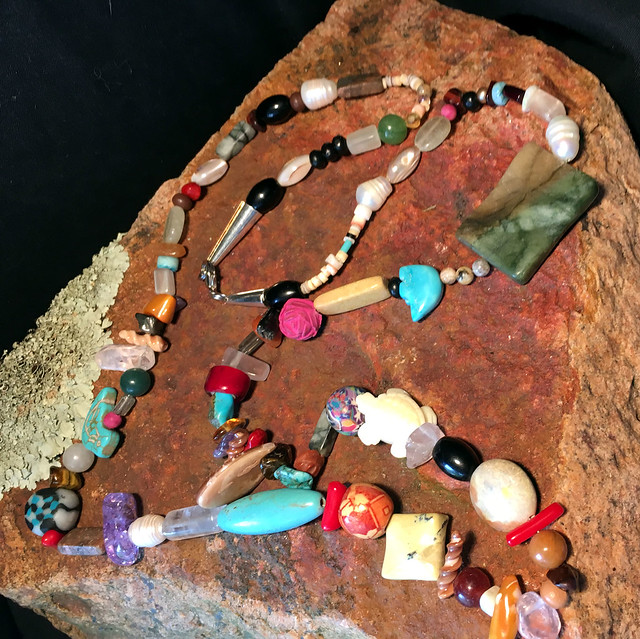 2 by Fernwood Acres, on Flickr
2 by Fernwood Acres, on Flickr
 1a by Fernwood Acres, on Flickr
1a by Fernwood Acres, on Flickr
Necklace 2 has almost 40 different varieties of stones/shells/beads.
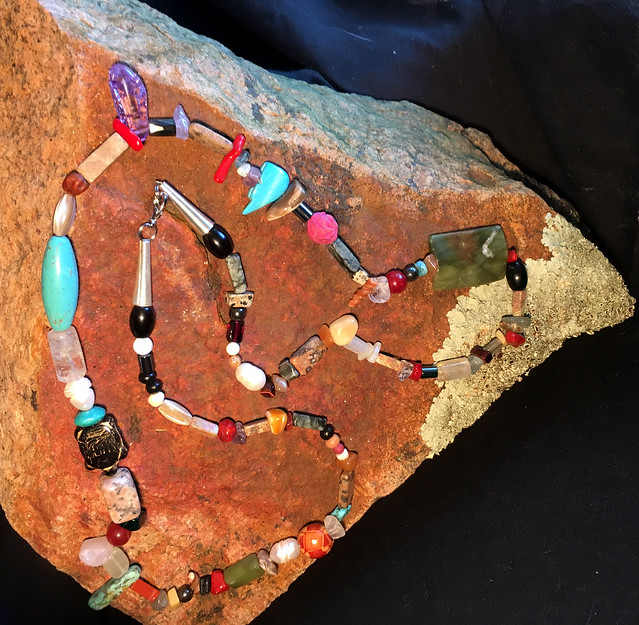 1a by Fernwood Acres, on Flickr
1a by Fernwood Acres, on Flickr
 2a by Fernwood Acres, on Flickr
2a by Fernwood Acres, on Flickr
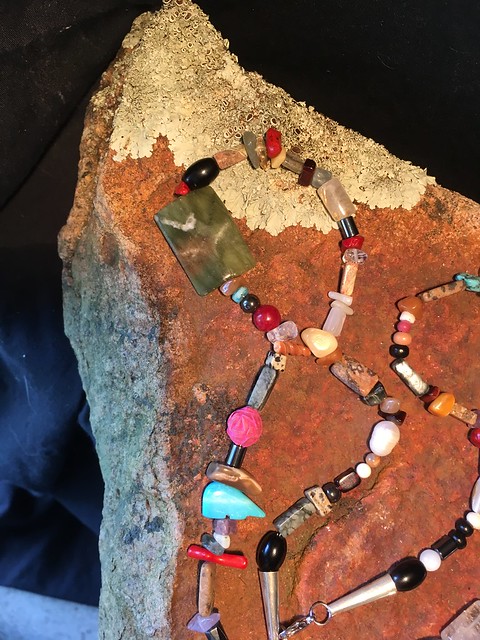 3a by Fernwood Acres, on Flickr
3a by Fernwood Acres, on Flickr
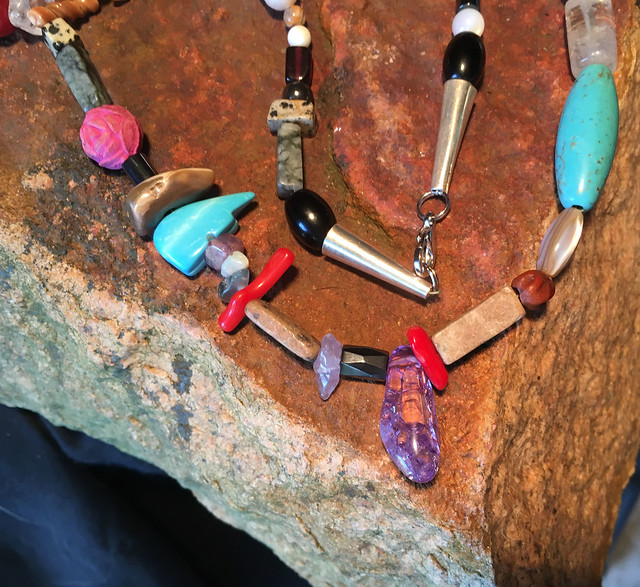 4a by Fernwood Acres, on Flickr
4a by Fernwood Acres, on Flickr
Necklace 3 has almost 50 different varieties of stones/shells/beads.
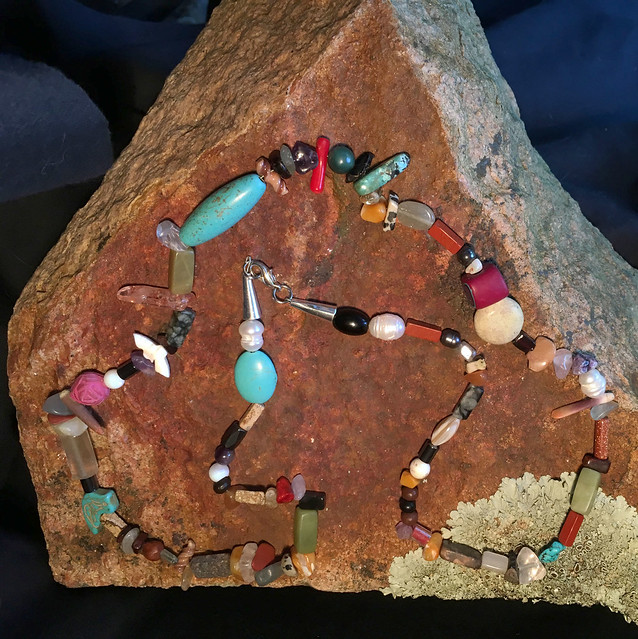 1b by Fernwood Acres, on Flickr
1b by Fernwood Acres, on Flickr
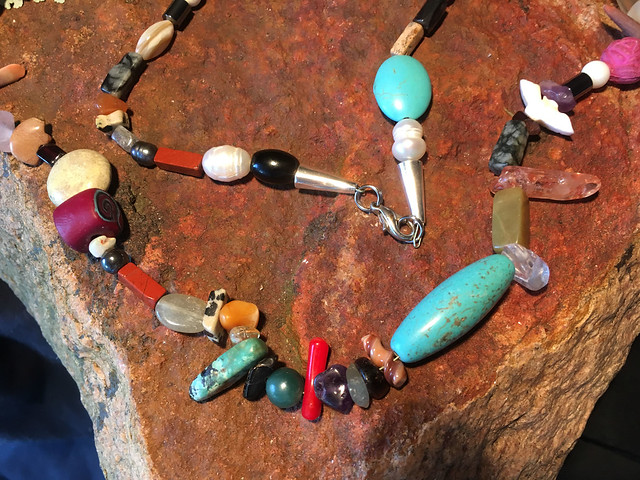 2a by Fernwood Acres, on Flickr
2a by Fernwood Acres, on Flickr
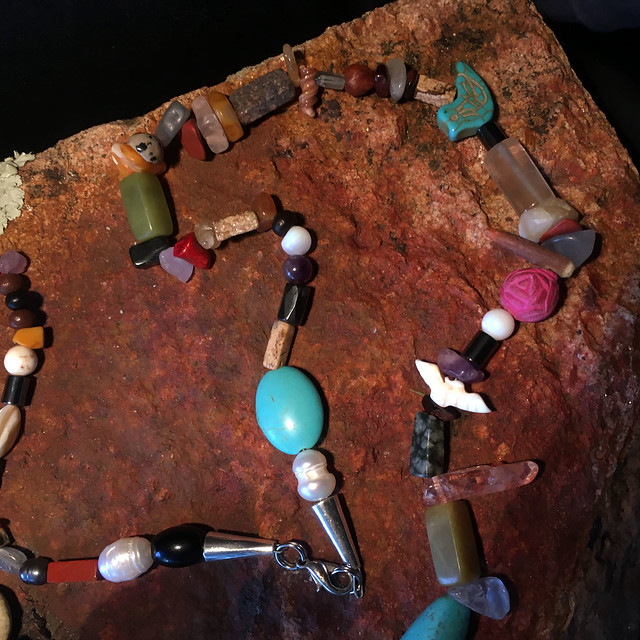 3a by Fernwood Acres, on Flickr
3a by Fernwood Acres, on Flickr
 3a by Fernwood Acres, on Flickr
3a by Fernwood Acres, on Flickr
Each necklace has turquoise, coral, mother of pearl and onyx. A Navajo saying states: "A woman can always want, but she will never have to need if she has all four of these stones in her possession." Each of these has special traditional attributes.
Long ago, trading was an important part of survival. Many ancient cultures utilized beads and shells as a form of money. It was also an early form of marketing, per say. If a person gained the reputation of high craftsmanship, others would travel for hundreds of miles, or more, for the chance to obtain some of their work. The gift of a bead, of any material, was highly appreciated, as it showed that the giver truly respected and valued the recipient. Some of these beads had been in a family for generations. When a bead was given to another, it was said to carry the experiences of past owners. Their knowledge strengths, and life events. These accounts were sometimes shared with the recipients, who passed this information along with the bead.
Beads received in trade or as gifts were often placed on a single strand as received. This not only kept the beads safe, but when the strand became long enough, made for a very attractive jewelry piece. Shorter strands were often used as adornments for ceremonial clothing or were hung in the house.
Necklace 1
contains over 40 beads of various materials.
 2 by Fernwood Acres, on Flickr
2 by Fernwood Acres, on Flickr 1a by Fernwood Acres, on Flickr
1a by Fernwood Acres, on FlickrNecklace 2 has almost 40 different varieties of stones/shells/beads.
 1a by Fernwood Acres, on Flickr
1a by Fernwood Acres, on Flickr 2a by Fernwood Acres, on Flickr
2a by Fernwood Acres, on Flickr 3a by Fernwood Acres, on Flickr
3a by Fernwood Acres, on Flickr 4a by Fernwood Acres, on Flickr
4a by Fernwood Acres, on FlickrNecklace 3 has almost 50 different varieties of stones/shells/beads.
 1b by Fernwood Acres, on Flickr
1b by Fernwood Acres, on Flickr 2a by Fernwood Acres, on Flickr
2a by Fernwood Acres, on Flickr 3a by Fernwood Acres, on Flickr
3a by Fernwood Acres, on Flickr 3a by Fernwood Acres, on Flickr
3a by Fernwood Acres, on FlickrEach necklace has turquoise, coral, mother of pearl and onyx. A Navajo saying states: "A woman can always want, but she will never have to need if she has all four of these stones in her possession." Each of these has special traditional attributes.













